Use of Machine Learning in Netflix, a visionary video streaming app development approach
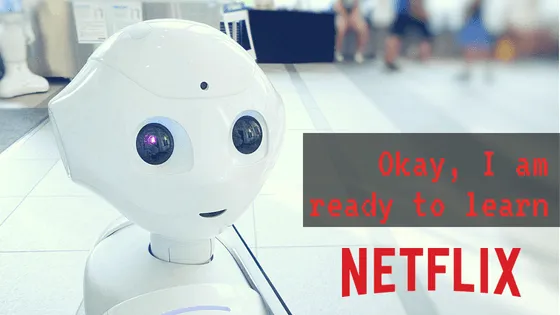
Talking about the video streaming app development industry, Netflix is one big giant alongside YouTube, Hulu, Amazon Prime, HBO Go, etc.
We all know these reputable names in the video streaming app development niche. Strong marketing gambits, heavy money pumping, credible content, amazing user-friendliness – – there are N number of factors which have laid a strong foundation for these companies.
Brief About Netflix’s: The Idol For Video Streaming App Development
“Netflix” needs no introduction in today’s world. The success story of Netflix is known by the fact that it caters to more than 125 million memberships in over 190 countries. With more than 5k TV shows and movies to display, it becomes a double-edged sword for Netflix. It has to make sure, the users do not fall prey to choice paralysis. With more than 250 million hours of video per day being streamed on the platform, it is not an easy job for the company to keep the interests burning. At this scale, providing quality entertainment to every single user requires much more than just providing an online video streaming app to watch favorite shows.
And that is why Netflix harnesses the power of AI and the use of Machine Learning to provide an unmatchable ux designing in their video streaming app development.
“At Netflix, we use big data for deep analysis and predictive algorithms to help provide the best experience for our members. A well-known example of this is the personalized movie and show recommendations that are tailored to each member’s tastes.” says Nirmal Govind, Director, Studio Production & Streaming Data Science at Netflix.
For those of you who are uninitiated, here is an oversimplification of how Netflix streams content to viewers all around the globe and rules the entertainment app development scene. For reading on how to get on Netflix Similar App Development, studying features and understanding business model, please go to the linked page.
The Use of Machine Learning in Netflix: Under The Hood Of The Video Streaming App Development
Netflix has set up different Content Delivery Networks (CDN) all across the globe. These CDNs take the original data (entire website and media included) and copy it across hundreds of servers spread all over the world. This means, if someone from Sydney connects with Netflix, the CDN, instead of connecting to the main server based in the United States, it connects to the nearest server in Australia. This largely reduces the lag time- time is taken to send a request and receive a response. Again, this is an oversimplification of something very complex that goes into their video streaming app development.
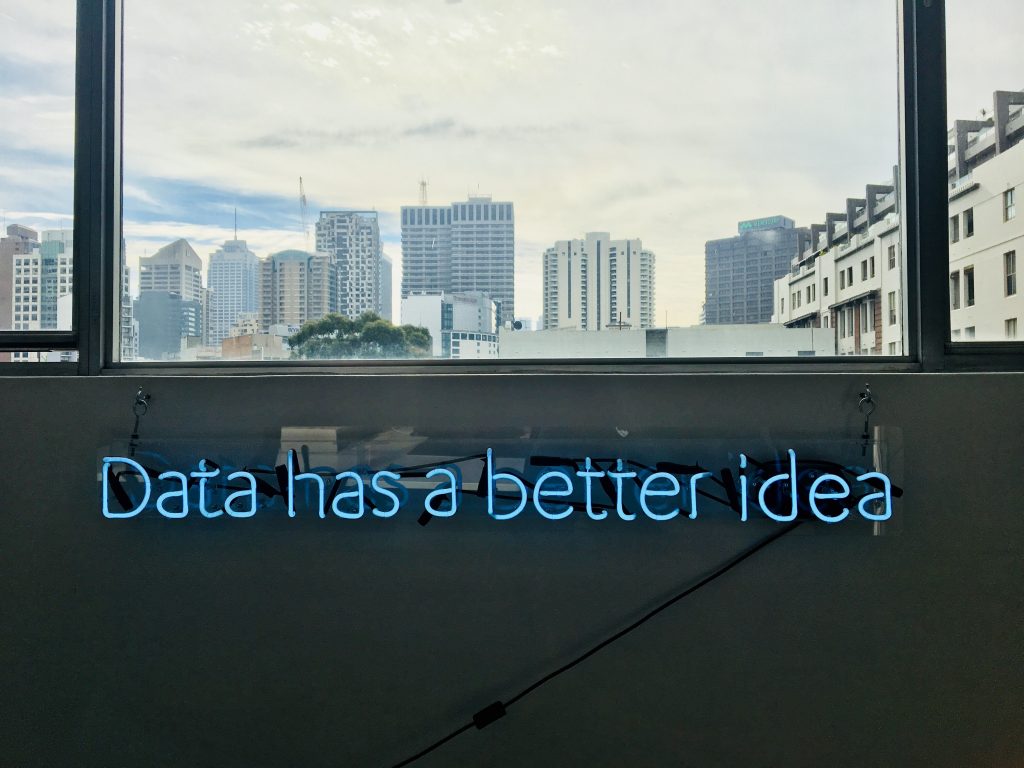
Now, why did we discuss how Netflix streams content all over the world?
When we are talking about the entire ‘globe’, one thing has to be kept in mind that users all over the continents behave and interact differently, especially in terms of preferences. No two single users would watch similar content at the same time.
Chaitanya Ekanadham, Data science manager at Netflix says, “Providing a quality streaming experience for this global audience is an immense technical challenge. A large portion of this is engineering effort required to install and maintain servers throughout the world, as well as algorithms for streaming content from those servers to our subscribers’ devices.“
This is an astronomical task which cannot be fulfilled by humans alone. This requires close observation on user’s viewing patterns.
He further adds, “As we expand rapidly to audiences with diverse viewing behavior, operating on networks and devices with widely varying capabilities, a “one size fits all” solution for streaming video becomes increasingly suboptimal.”
Let’s get under the hood and check how, with the use of Machine Learning, Netflix enhances the user experience in their video streaming app development.
Netflix has millions of individual user profiles. Each profile viewing experience is vastly different. “What we see from those profiles is the following kinds of data – what people watch, what they watch after, what they watch before, what they watched a year ago, what they’ve watched recently and what time of day”. Says Todd Yellin, Netflix’s vice president of product innovation.
This data forms the first base for the machine to learn the user behavior.
Next, there is a staff of in-house and freelance viewers who watch every single minute of the shows and movies and feed the machine with relevant tags. These tags vary depending upon the show. Be it a movie set in space, or about the medieval times, these people from the staff tag the content accordingly.
“We take all of these tags and the user behavior data and then we use very sophisticated machine learning algorithms that figure out what’s most important. How much should it matter if a consumer watched something yesterday? Should that count twice as much or ten times as much compareed to what they watched a whole year ago? How about a month ago? How about if they watched ten minutes of content and abandoned it or they binged through it in two nights? How do we weight all that? That’s where machine learning comes in. What those three things create for us is ‘taste communities’ around the world. It’s about people who watch the same kind of things that you watch.” says Todd Yellin.
Netflix divides its user’s data input into 2 different categories- implicit and explicit. “Explicit data is what you literally tell us: you give a thumbs up to The Crown, we get it,” Yellin explains. “Implicit data is really behavioural data. You didn’t explicitly tell us ‘I liked Unbreakable Kimmy Schmidt’, you just binged on it and watched it in two nights, so we understand that behaviourally. The majority of useful data is implicit.”
This helps in presenting an explanation for the choice of rows using a member’s implicit genre preferences — recent plays, ratings, and other interactions — or explicit feedback provided through our taste preferences survey.
The Basic Architecture for Video Streaming App Development
The document contains the chart of basic architecture of any video streaming app which will help you understand how these app works
Achieving Targeted And Personalized Experience Using AI & ML In The App
Here, take an example of how video streaming app development uses all these data to target a specific segment. “We are also interested in models that take into account how the languages available for the audio and subtitles of each video match the languages that each member across the world is likely to be comfortable with when generating the recommendations, for example, if a member is only comfortable (based on explicit and implicit data) with Thai and we think would love to watch “House of Cards,” but we do not have Thai audio or subtitles for it, then perhaps we should not recommend “House of Cards” to that member, or if we do have “House of Cards” in Thai, we should highlight this language option to the member when recommending “House of Cards.”
Netflix has a system in place with a strong positive feedback loop. What it does is videos that the members engage highly with are recommended to many members based on certain parameters, leading to high engagement with those videos, and so on.
Combining all the data and feeding it to the machine produces the best possible results. Yellin concludes explaining taking an example about ‘Ozark’–a drama series where the protagonist is a money-laundering family man stuck with the Mexican drug cartel that he works for, “We’ve found that people who tend to watch ‘Blacklist’ and ‘House of Cards’ tend to like ‘Ozark’. But another kind of person who will find he likes ‘Ozark’ is a fan of ‘Narcos’ and ‘El Chapo’ and other drug-cartel-oriented dramas and documentaries. It’s not like we could have guessed this ahead of time,” Yellin said. “We just track which shows tend to cluster together. Who would have thought that ‘Jessica Jones’ and ‘Kimmy Schmidt’ would cluster together?”
The best use of Machine Learning is possible only when you have enough amount of data to feed into the computer. Without much data, the machine wouldn’t be able to figure out the desired outcome. With the huge amount of data received from the users, the staff, those smart algorithms process and analyze the data in order to calculate the nearest possible outcome.
To give a small taste of what those algorithms are and what Machine Learning methods do Netflix’s video streaming app development use, here is a list of all the methods that run under the hood. To not sound intimidating, this is a simplified list of all the methods. Do not worry, you don’t need to memorize them in order to understand everything. These are just to show how we have oversimplified the entire process to get a layman’s hold on the working mechanism. Below mentioned methods are the complex principles on which the recommendation system of Netflix runs.
- Linear regression
- Logistic regression
- Elastic nets
- Singular Value Decomposition
- Restricted Boltzmann Machines
- Markov Chains
- Latent Dirichlet Allocation
- Gradient Boosted Decision Trees
- Random Forests
To conclude, here is a list of all the parameters on which Netflix categorises it’s Recommender System.
Personalized Video Ranker (PVR)
__________
Depending upon the device capabilities, a typical Netflix homepage has about 40 rows.
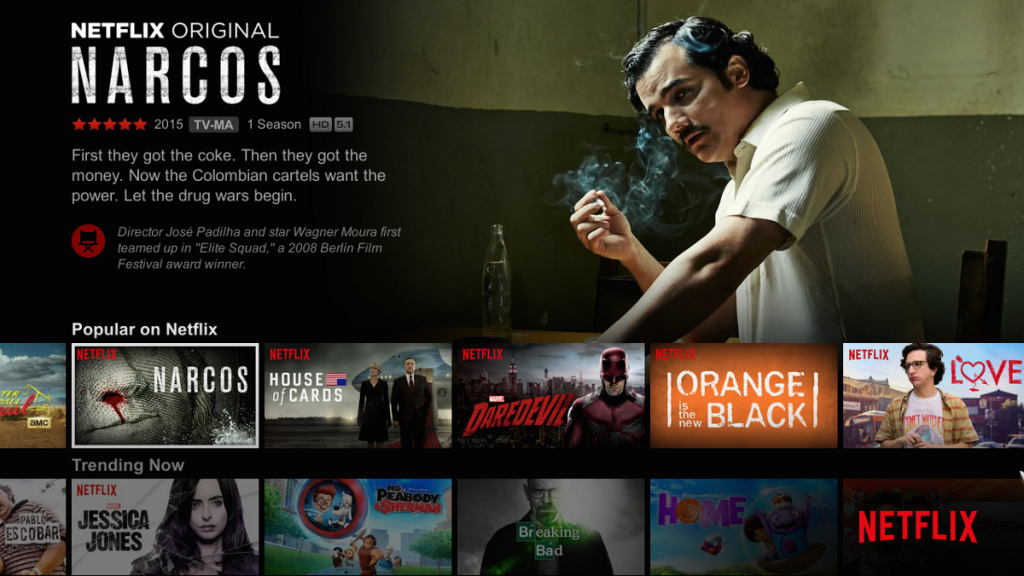
On the top we see a row under the name, Trending Now, the content under this row has been generated by the PVR algorithm and is different for different users.
Top-N Video Ranker
__________
This video algorithm displays the users with Top Picks personalised for them by the system. Top N ranker is optimized and evaluated using metrics and algorithms that look only at the head of the catalog ranking that the algorithm produces, rather than at the ranking for the entire catalog.
Video-Video Similarity
__________
Netflix has another row named Because You Watched (BYW). This row anchors the recommendations to one single video watched by the user. Even though the ranking provided by the Video-Video similarity algorithm is not personalized, the choice of which BYW rows shows up on the homepage is personalized by the algorithms.
The Evidence
__________
To explain this simply, evidence algorithms take into consideration whether to show that a certain movie won an Oscar or instead show the member that the movie is similar to another video recently watched by that member; they also decide which background image out of several versions use to best support a given recommendation. To support this, look at the below images.
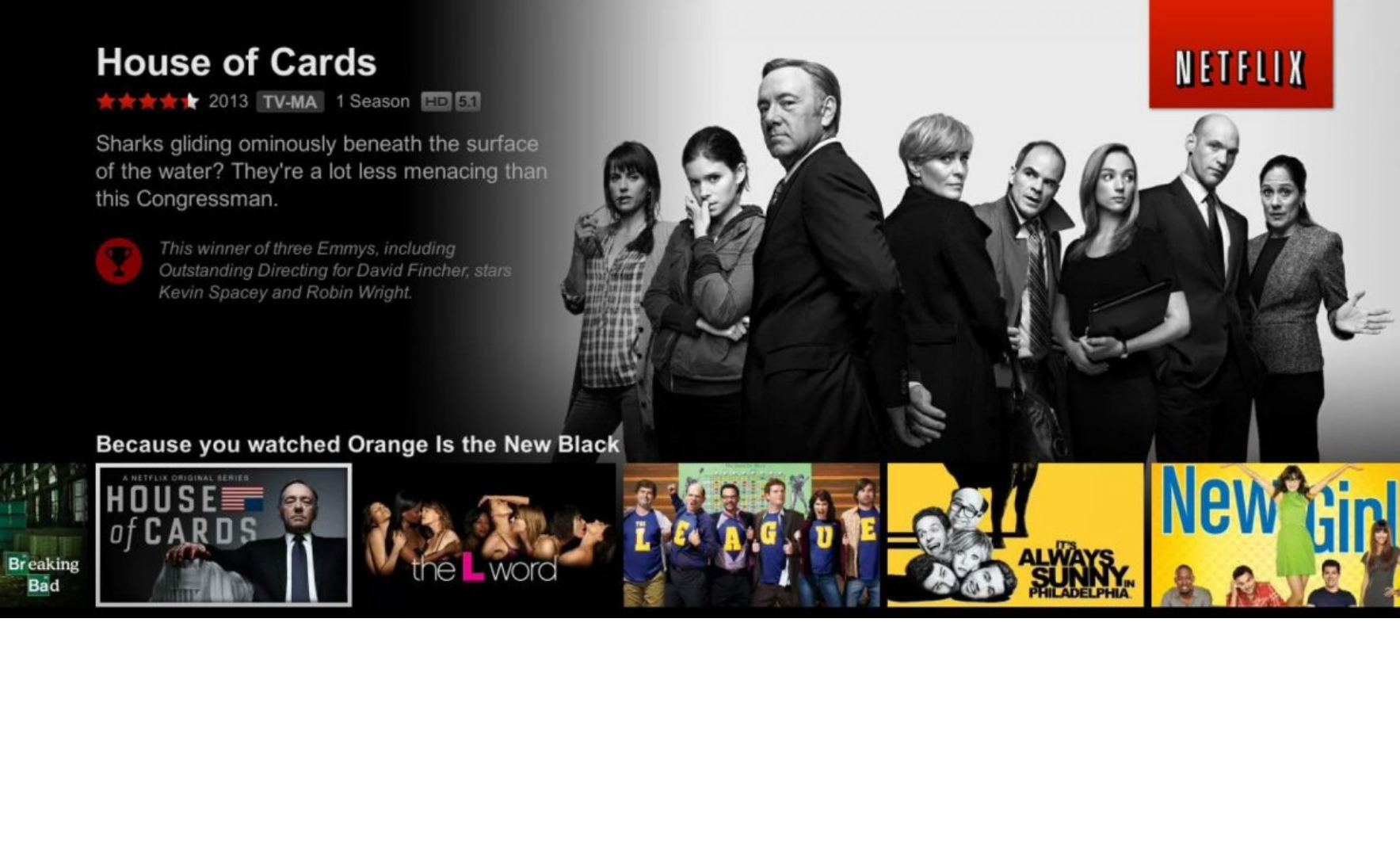
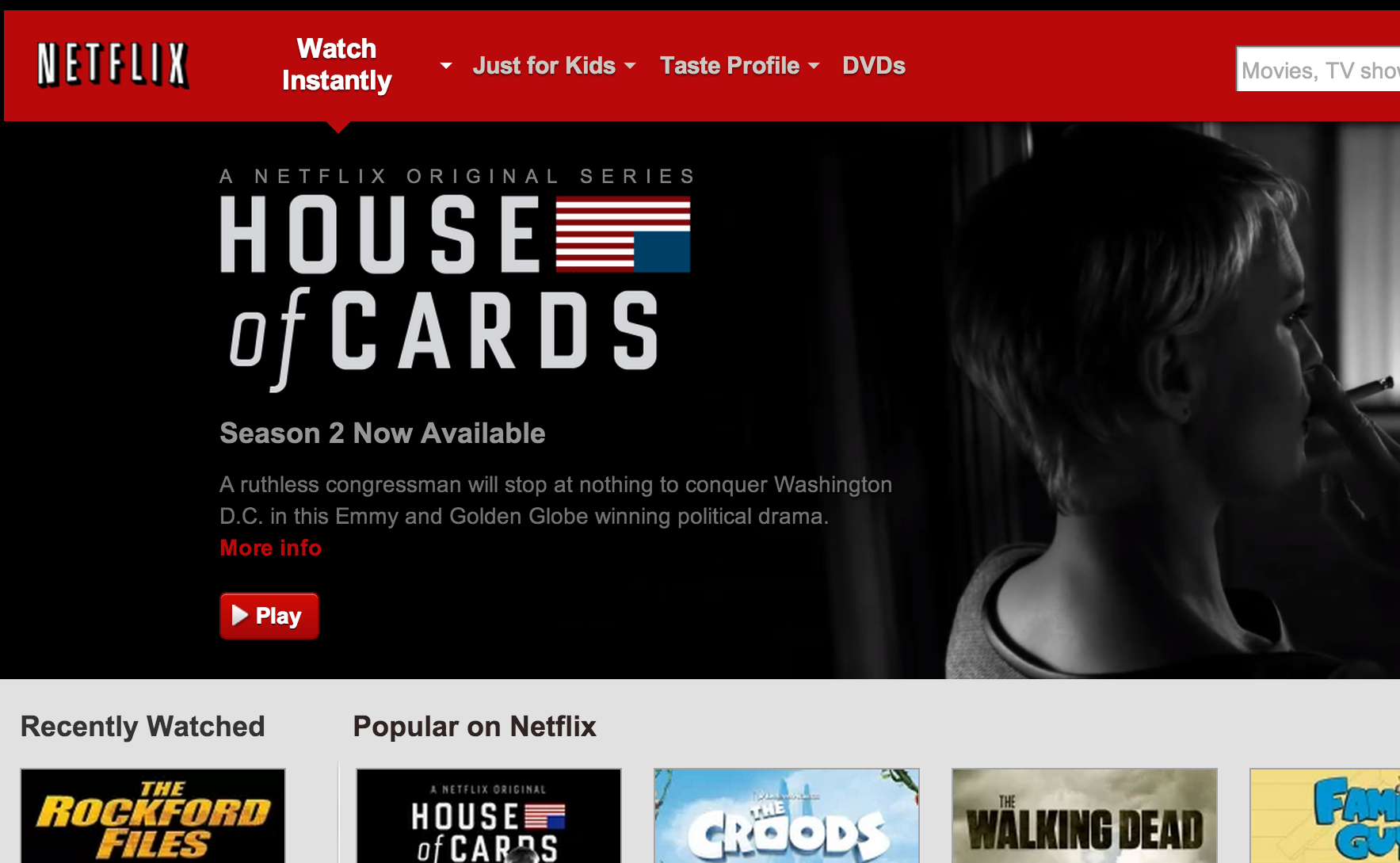
Notice how in both these images, the display picture for the show, House of Cards, is different. Be it the main banner image or the small image for the row. All these images are processed by the machine learning algorithm and displayed accordingly.
The Power Lies In Your Hands.
If you like this blog, then please do share it.
Share This Article On
Conclusion
With great power comes great responsibility and great responsibility requires great technology (in today’s terms). Netflix’s video streaming app development has to manage and deliver a gargantuan amount of data as well as content. With the advancements in technology, it is evident that they siphon the power of Machine Learning in order to always keep moving ahead in a market where entropy dominates vastly.
Follow Us On

